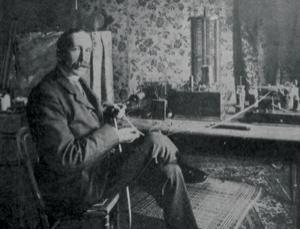Paul VK2ICQ adds:
Thanks to Stuart VK2FSTU for the link. Note that we’ve previously posted a video on this exact event by Tom Scott, if you missed it first time around and you’d prefer to watch rather than read, here it is again!
From Hackaday, written by Richard Baguley, original post here.
The place is the historic lecture theater of the Royal Institution in London. The date is the 4th of June 1903, and the inventor, Guglielmo Marconi, is about to demonstrate his new wireless system, which he claims can securely send messages over a long distance, without interference by tuning the signal.
The inventor himself was over 300 miles away in Cornwall, preparing to send the messages to his colleague Professor Fleming in the theater. Towards the end of Professor Flemings lecture, the receiver sparks into life, and the morse code printer started printing out one word repeatedly: “Rats”. It then spelled out an insulting limerick: “There was a young man from Italy, who diddled the public quite prettily”. Marconi’s supposedly secure system had been hacked.

The person behind this hack was Nevil Maskelyne, an inventor, magician, and general troublemaker who was a long-time rival of Marconi. He was the manager of a rival wireless company and had been involved in a number of disputes with Marconi over the patents that covered wireless telegraphy systems. He decided that the most effective way to show that Marconi’s claims were hollow was a practical demonstration.
In the trade journal The Electrician (the Hackaday of its time) he detailed how he hacked the system. One of the fundamental claims of Marconi was that because his system used a tuned signal, other signals would not interfere unless they were tuned to the same frequency. This, however, had not been proven to the satisfaction of Maskelyne, and he didn’t accept that the system was really secure. So, he set out to demonstrate this. But how could you prove this? In his account in The Electrican, he wrote that:
“When, however, it was pointed out to me that the practical demonstrations accompanying the lecture rendered independent tests possible, I at once grasped the fact that the opportunity was too good to be missed… The only hope, then, was to interpolate messages calculated to anger and “draw” somebody at the receiving end. If that could be done, there would be proof positive.”


 What is it?
What is it?